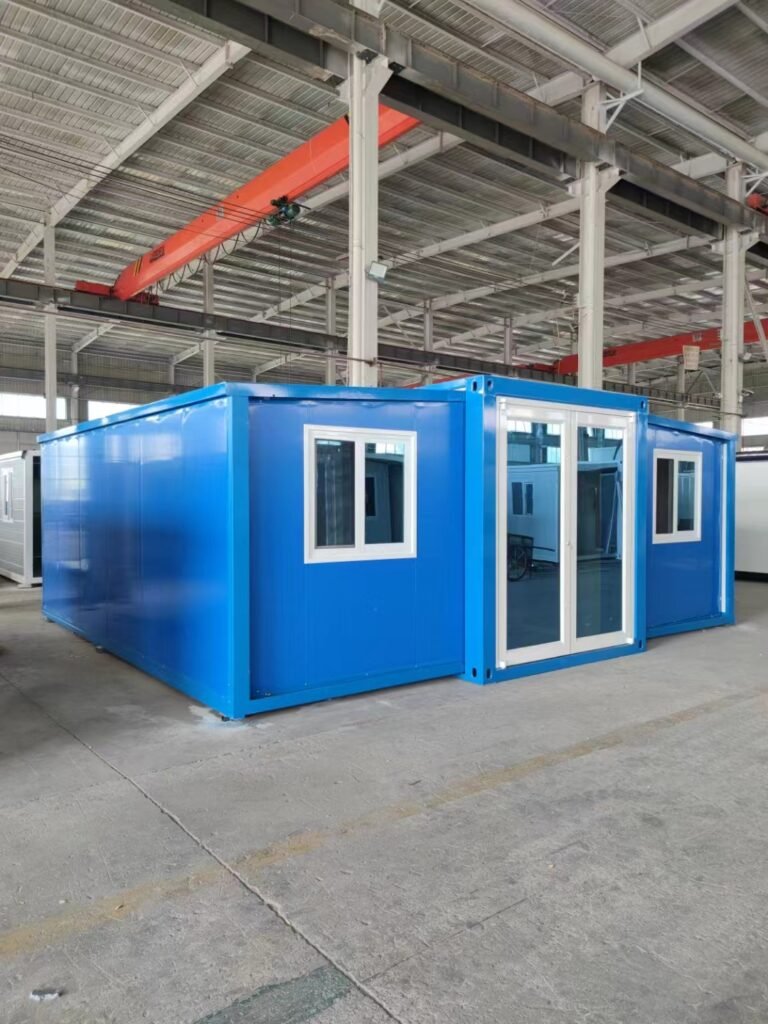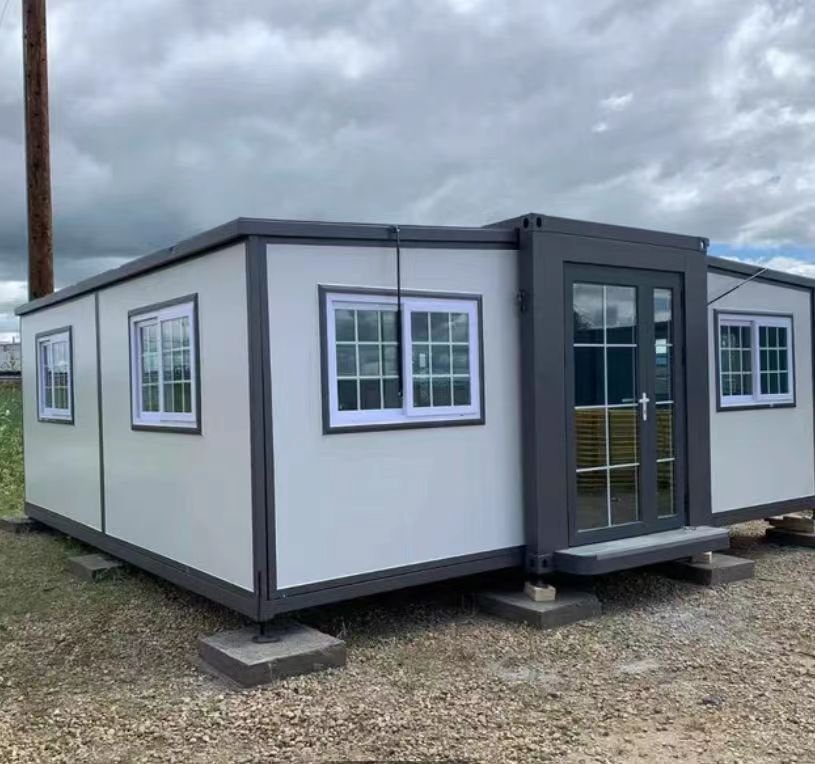Are you looking to buy a container to turn into a shop, house, cabin, shed, or something else and you are just not quite sure you will get it right? How the hell do you buy a shipping container and get it from where it is to where you want it? You can’t figure it out yet, but you’re in the right place. It’s not that bad. You don’t want to make mistakes, but they’re easy to make. As you read through, you will learn what to do and what not to do and you can buy the right container and get it delivered hassle free.
Let’s walk through the entire process with you. That way, you will make the right decisions and you won’t screw up like most people do.

As mega-professionals in the container housing world, we have successfully guided more people and businesses through this process than we can count. We have helped people process local regulations, and we’ve helped them organize the best delivery, because we’ve encountered all flavors of problems. Container homes are cool and cheap, but as a structure, there are some tricky things you need to think about when you do the shipping and delivery. By going step by step, you can make sure your new home or office shows up on time, in perfect condition, and with minimal trouble.
Buying a shipping container home and getting it delivered to where you want it to be requires you to go through some steps. We’re going to walk through those:
- Check Location Feasibility Before you buy a container
You need to make sure it can go in the place you want it. First and foremost, check with your local building codes and regulations including zoning, whether you need any permits and if they have any restrictions on overhead when it comes to turning a shipping container into a home. Not everywhere you go can you have a modular home or a container home. Make sure you check the specific local requirements for your location. You also need to verify the minimum square footage requirements which may apply. - You Need to Pick a Layout
Okay, you got the green light at this location thing. The next thing you need to do is pick your layout. With container homes, you can choose from all different sizes and shapes, and you can even modify them to your liking. Whether you want something small and basic or something a little more complex, work with a seller who can special quote your project to meet your precise needs. Make sure your layout is going to meet the local codes and you’re going to have all the documentation on it you need for the builders, the local government, and, if you are financing it, the bank. - Hire a builder When it comes to putting up your container home
You need to find a good builder. You want to get an experienced general contractor who’s going to handle the delivery of the new one. You need to find somebody who’s used to doing these modular homes and definitely those shipping container homes. You want somebody who can handle everything that comes with it, whether it’s the foundation, setting it up, getting all the utilities set, and making sure all the loose ends are got. - Building Your Container Home
Once you pick out your layout, the container gets shipped to a factory and they make your new home. They modify the structure, get it insulated, put in all the doors, put in the windows, and they make it look real pretty. That’s where they put in that cool floor you want and whatever kind of decorations you want. - You Will Need to Have It Delivered
At this point, they’re going to make the home and then they’re going to box it back up and bring it to your site. When they transport it, there are a couple of different options available. Let’s talk about the delivery methods available.
Transportation Methods
- Tilt Bed Truck
For distances less than 200 miles, a tilt bed truck is often the most efficient method. The bed of the truck tilts, allowing the container to slide off directly onto the ground. This method is fast and cost-effective, but requires a significant amount of clearance. For example, a 20-foot container needs around 110 feet of unobstructed space, and a 40-foot container requires 130 feet. This is perfect for locations with ample space and easy access. - Flatbed Truck
For longer distances (greater than 200 miles), a flatbed truck is more suitable. However, this method requires heavy equipment, like a crane, to load and unload the container, which can increase the overall cost. It’s ideal when transporting containers to remote locations or areas with less clearance. - Cranes
Cranes are often used when other methods are not feasible. They provide safe and efficient lifting for both loading and unloading containers, especially in situations where tilt or flatbed trucks cannot easily access the site. This method is more expensive but can be necessary for locations with limited access. - Customer Pickup
In some cases, the buyer may choose to pick up the container from the depot. This requires arranging the proper equipment for transportation, such as a suitable truck and necessary tools for securing the container during transit.
Additional Considerations
Disassemble Stacked Containers: If you’re moving more than one container, you’ve got to take them apart so they can be delivered easier and safer.
Remove Your Stuff: Before you move the container, make sure you take everything out of it so that nothing messes up during the trip.
Prepare the Site: Before the truck gets there, you need to get the site ready. That means you need to level the ground and have the foundation ready.
Set It Up When It Gets There: Once the container is delivered, you need to set it up. You have to hook up all the utilities, put in a staircase, install the handrails, put in the sheetrock, and have all the other fun, like flooring.
Now that you understand the basics, let’s dig a little deeper. In this next few sections, we are going to tackle some of the big questions you have about the best way to transport container homes and what’s the best way to make sure your container is ready to go whenever they bring it to your spot. If you’ve been wondering about tilt bed versus flatbed trucks or how to use a crane, we’re going to show you this stuff.
What are the best methods for getting a shipping container home to my place?
The method of transportation is going to depend on how far you have to haul it, where you’re going, and the size of the container. For short hauls, like less than 200 miles, you’re going to want to use a tilt bed truck. For longer distances, flatbed trucks come in handy. Cranes are going to be necessary when you don’t have flatbed or tilt bed truck accessibility.
How do I pick between a tilt bed truck and a flatbed truck for hauling my container home?
This choice is really about how far you have to haul your container and how much room you have to get the truck in and out whenever they deliver your container. Tilt bed trucks work best when you’re doing local deliveries, less than 200 miles, and you’ve got plenty of room to get the truck in there. Whenever you have to go further and haul your container over 200 miles, you need a flatbed truck. A flatbed truck, when you ship on one of those, requires heavy equipment to help them load and unload the container. Translation: that’s going to cost you some more money.
What are the main factors to consider when planning the transport of a shipping container home?
You need to remember the distance, accessibility, and the type of container (size and stackability). Don’t forget to factor in the additional cost of equipment like cranes or forklifts if you need them.
How do I prepare my shipping container home for transport?
You need to get your personal stuff out of there, make sure your container is tied down, and have your spot ready to go whenever the truck gets there. If you’re moving more than one container, you need to take it apart.
Why should I use a crane to move my shipping container house?
If you have to put a container in a crazy spot or load it on a place that’s hard to get to, then you’re going to use a crane. This is good because it’s safe and accurate. It’s also the most expensive, but sometimes it’s the only way you can move a container.
At the end of the day, while it may seem daunting to purchase and move a shipping container home, understanding the steps and the methods of shipping can help you keep it simple. Whether it’s checking everything out to picking the right way to get your container to your site, every step matters. With the right planning and the right people, you can have your new container sitting there, ready to put in your stuff before you know it. Do your research, get your plan ready, and pick the right way to go to enjoy the benefits of container living soon!




